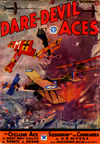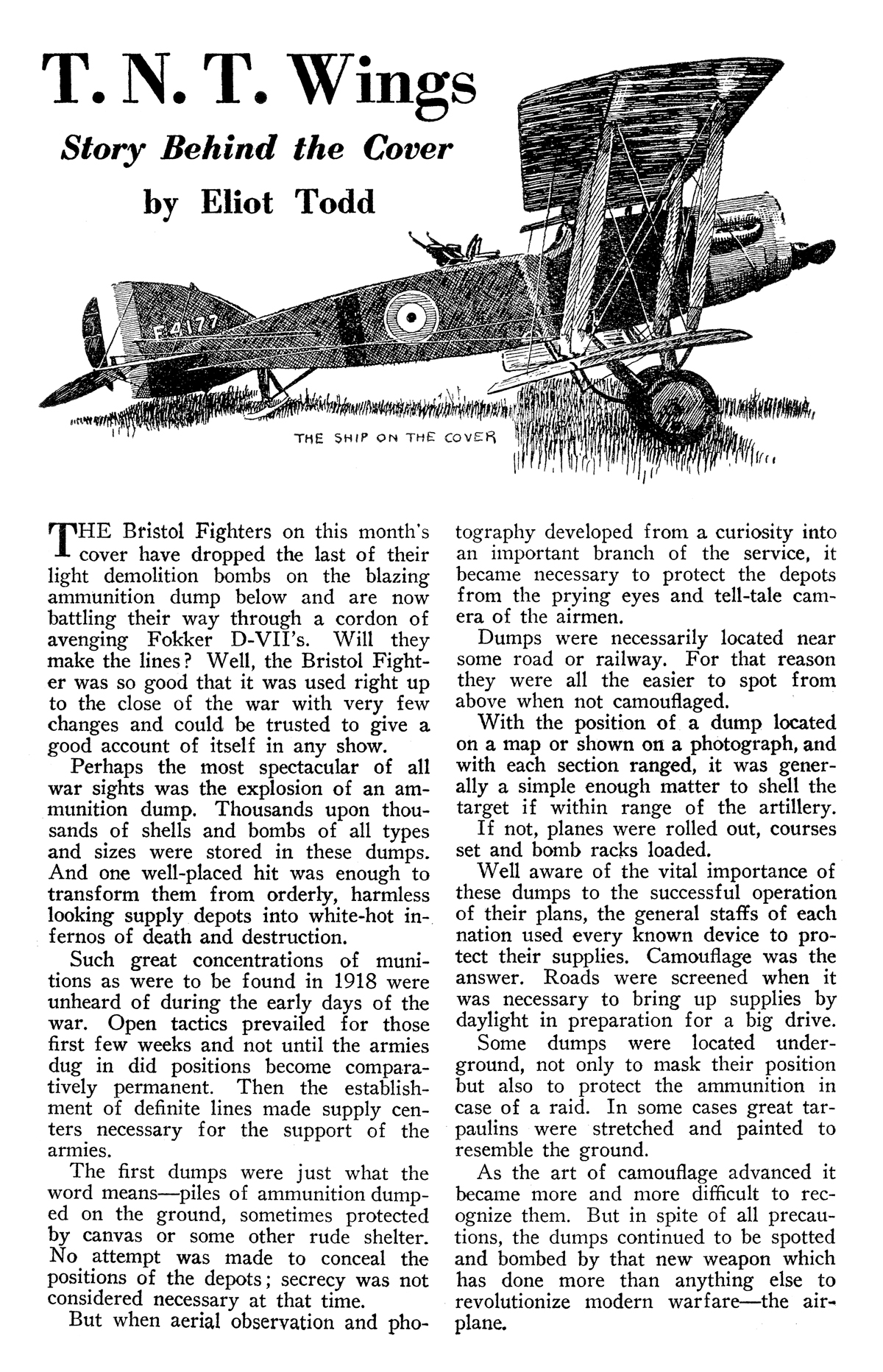“T.N.T. Wings” by Eliot Todd
Frederick Blakeslee painted all the covers for the entire run of Dare-Devil Aces. And each of those covers had a story behind it. This time, Eliot Todd recounts the story behind Blakeslee’s October 1934 cover for Dare-Devil Aces. . . .
 THE Bristol Fighters on this month’s cover have dropped the last of their light demolition bombs on the blazing ammunition dump below and are now battling their way through a cordon of avenging Fokker D-VII’s. Will they make the lines? Well, the Bristol Fighter was so good that it was used right up to the close of the war with very few changes and could be trusted to give a good account of itself in any show.
THE Bristol Fighters on this month’s cover have dropped the last of their light demolition bombs on the blazing ammunition dump below and are now battling their way through a cordon of avenging Fokker D-VII’s. Will they make the lines? Well, the Bristol Fighter was so good that it was used right up to the close of the war with very few changes and could be trusted to give a good account of itself in any show.
Perhaps the most spectacular of all war sights was the explosion of an ammunition dump. Thousands upon thousands of shells and bombs of all types and sizes were stored in these dumps. And one well-placed hit was enough to transform them from orderly, harmless looking supply depots into white-hot infernos of death and destruction.
Such great concentrations of munitions as were to be found in 1918 were unheard of during the early days of the war. Open tactics prevailed for those first few weeks and not until the armies dug in did positions become comparatively permanent. Then the establishment of definite lines made supply centers necessary for the support of the armies.
The first dumps were just what the word means—piles of ammunition dumped on the ground, sometimes protected by canvas or some other rude shelter. No attempt was made to conceal the positions of the depots; secrecy was not considered necessary at that time.
But when aerial observation and photography developed from a curiosity into an important branch of the service, it became necessary to protect the depots from the prying eyes and tell-tale camera of the airmen.
Dumps were necessarily located near some road or railway. For that reason they were all the easier to spot from above when not camouflaged.
With the position of a dump located on a map or shown on a photograph, and with each section ranged, it was generally a simple enough matter to shell the target if within range of the artillery.
If not, planes were rolled out, courses set and bomb racks loaded.
Well aware of the vital importance of these dumps to the successful operation of their plans, the general staffs of each nation used every known device to protect their supplies. Camouflage was the answer. Roads were screened when it was necessary to bring up supplies by daylight in preparation for a big drive.
Some dumps were located underground, not only to mask their position but also to protect the ammunition in case of a raid. In some cases great tarpaulins were stretched and painted to resemble the ground.
As the art of camouflage advanced it became more and more difficult to recognize them. But in spite of all precautions, the dumps continued to be spotted and bombed by that new weapon which has done more than anything else to revolutionize modern warfare—the airplane.

“T.N.T. Wings: The Story Behind The Cover” by Eliot Todd
(October 1934, Dare-Devil Aces)
Check back again. We will be presenting more Stories behind the Covers.




